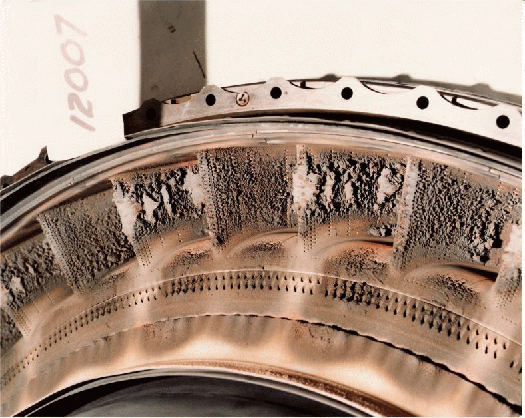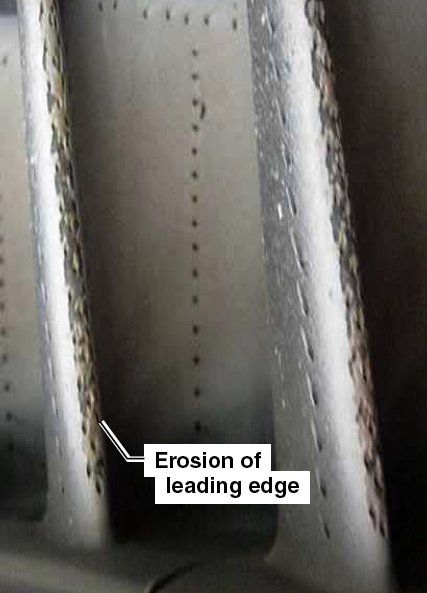The superheated particles turn to glass inside the engine and stop it dead.
Agaricus bisporus said:
You'd think that with all the bolleaux that the media spout on aviation we'd not do it ourselves in this place. What an utter load of hogwash! Still, it would never do to let facts or accuracy get in the way of a good story, would it?
Actually the volcanic ash does turn into liquid glass once it is heated above its melting point in the combustor. Below is a photo of the Stage 1 HPT nozzle located just aft of the combustor from one of the BA 747 engines. The accumulation you see on the airfoils is melted volcanic ash (glass) solidified spatter.

The photo below is of a CFM56-2 Stage 1 HPT blade from a DC-8 that very briefly encountered a volcanic ash cloud. The leading edge is starting to erode and the cooling holes are starting to clog from the ash dust.
 Recognition
Odor.
Recognition
Odor. When encountering a volcanic ash cloud, flight crews usually notice a smoky or acrid odor that can smell like electrical smoke, burned dust, or sulfur.
Haze. Most flight crews, as well as cabin crew or passengers, see a haze develop within the airplane. Dust can settle on surfaces.
Changing engine conditions. Surging, torching from the tailpipe, and flameouts can occur. Engine temperatures can change unexpectedly, and a white glow can appear at the engine inlet.
Airspeed. If volcanic ash fouls the pitot tube, the indicated airspeed can decrease or fluctuate erratically.
Pressurization. Cabin pressure can change, including possible loss of cabin pressurization.
Static discharges. A phenomenon similar to St. Elmo's fire or glow can occur. In these instances, blue-colored sparks can appear to flow up the outside of the windshield or a white glow can appear at the leading edges of the wings or at the front of the engine inlets.
TD